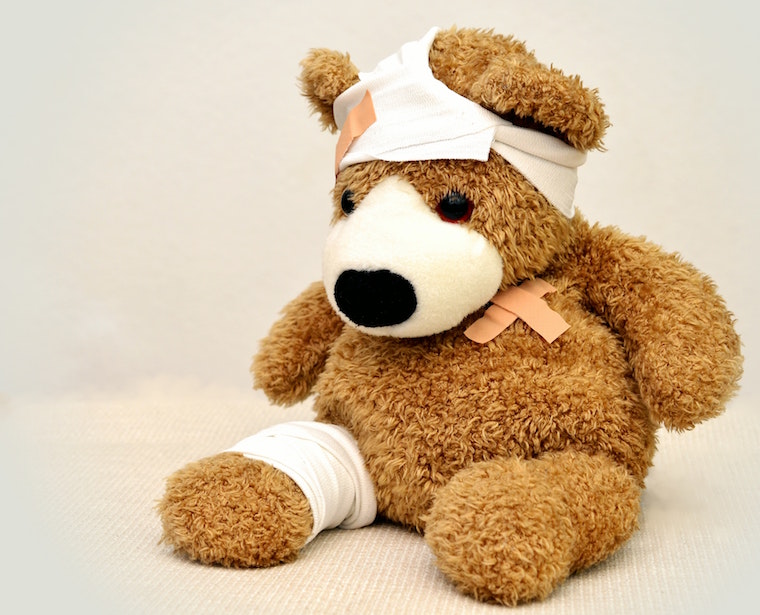Does it Really Hurt?
Lots of research is being conducted on pain, and no wonder! According to pain specialists at Johns Hopkins University, nearly 100 million Americans experience chronic pain, more than those who have diabetes, heart disease and cancer combined.1 To help find and improve treatments, researchers attempt to understand more about the underlying causes of pain.
Pain is actually a warning signal that something is wrong. The pain starts in receptor nerve cells located beneath the skin and in organs throughout the body. There are many different types of pain, but the most common stem from arthritis, spinal issues and headaches.
- Arthritis refers to more than 100 different conditions ranging from autoimmune disease to joint inflammation. Although there is no cure, there are treatment plans with short-term and long-term goals, dependent on the severity and type of arthritis.
- Back pain is so common that the National Institutes of Health contend that eight out of 10 people will have some sort of spinal issue in their lifetimes.
- Headaches vary, with migraines being one of the most debilitating types. They can be triggered by stress, fatigue and certain foods. Children can have headaches triggered by hormones, stress, medications, dehydration, depression and anxiety. Genetics can play a part in headaches.
Pain is the most common reason for people to seek medical care. It also is one of the reasons people frequently turn to complementary and integrative health approaches.2 Pain costs the United States an estimated $635 billion a year in terms of lost productivity and medical expenditures, with chronic pain being the leading cause of long-term disability in adults.3
Given the huge opioid crisis in the United States, many suffering from chronic pain are now dealing with limited access to prescriptions—alternatives to drugs are needed even more. These alternatives can range from outright tolerance (the grit your teeth school of pain management) to methodical breathing (similar to Lamaze techniques during childbirth) to yoga and meditation.
There also are a wide range of topical ointments, patches, orthopedic support systems and homeopathic formulations. For example, Nikken CM Complex Cream and Kenzen® Joint, both contain cetyl myristoleate, a naturally occurring compound that is believed to help ease joint discomfort. The soothing nature of the compound was discovered by National Institutes of Health researcher Dr. H.W. Diehl. The Nikken formulation is endorsed by Dr. Diehl’s estate.
Health practitioners who practice pain management contend that expectations are key to whether patients become overly dependent on prescription pain relievers. Expectations of pain relief can range from total painlessness to taking the edge off. Search and Rescue USA states that of 64,000 drug overdose deaths in 2016, 40% involved a prescription opioid.4 The higher the expectation, the more drugs are involved.
A concrete example of varying expectations can be witnessed with the changing trends in childbirth. Prior to the Industrial Revolution, women had no choice but to tolerate the pain of childbirth. By the 1940s and 1950s, many giving birth were completely “knocked out” or “put under” because childbirth was considered a medical procedure. By the 1960s and 1970s, the pendulum swung in the other direction and the natural childbirth movement began. By the 1980s, epidural anesthesia became common; as a result, many opted to stay awake but without feeling acute labor pains and Cesarean sections increased.5 By the 1990s, there was a swing back to birthing without drugs. With each decade, mothers and their families had a different set of expectations and pain was managed accordingly.
Whatever types of pain we may experience and whichever treatments we seek largely depend on our expectations. Barring life-threatening diseases that require extreme forms of pain management, an Active Wellness lifestyle can help enhance any other way of relieving pain.
KenkoTherm® Support Wraps help strained or achy muscles and joints function more smoothly. The strong yet stretchable wraps have warming ceramic reflective fibers that help provide a sense of confidence while they support movement. KenkoTherm DUK® Tape is made with 100% cotton tape and hypoallergenic. You can cut it to the size you want to obtain the support right where you need it. It’s water-resistant and lasts all day to help ease muscle and joint discomfort.

No comments:
Post a Comment